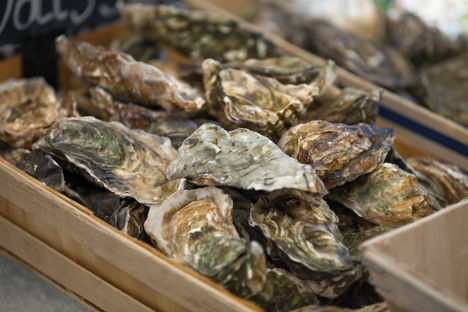
Canada coast to coast: the country’s best fish and seafood
From the plump scallops of Digby to Lake Winnipeg’s prized pickerel, there’s plenty for fish lovers to tuck into across Canada. Discover the country’s rich fishing heritage and some of the delicacies on offer.
Canada coast to coast: the country’s best fish and seafood
From the plump scallops of Digby to Lake Winnipeg’s prized pickerel, there’s plenty for fish lovers to tuck into across Canada. Discover the country’s rich fishing heritage and some of the delicacies on offer.
With the largest coastline in the world and well over 30,000 lakes, it’s no wonder Canada is home to some of the finest fish and seafood in the world. While salmon is arguably its most important oceanic export, the country’s various provinces are home to regional specialities beloved by the local community. Whether it’s the oysters of Malpeque Bay or Nova Scotia lobster, anyone with a love for fish or seafood can find unique flavours and tastes in every part of Canada – both along the coast and further inland. Here are just some of the country’s most prized catches.
British Columbia spot prawns
Until relatively recently, British Columbian spot prawns were either used as bait or sent to Japan, where they were (and still are) considered a true delicacy. Only the fishermen who caught them knew how tasty they were, reserving the best catch for themselves. These days, however, top Canadian chefs are using the large prawns in their cooking wherever possible, and their sweet flavour, firm texture and bright pink colour are winning fans across the country.
Spot prawns can vary in size but the larger specimens can measure up to twenty-three centimetres, making them a much more sustainable alternative to tiger prawns. When they’re in season (May to July), seaside cafés across British Columbia serve them simply, allowing the shellfish’s natural flavour to shine through.
British Columbia salmon
Canadian salmon is famous the world over, but the Pacific salmon from British Columbia is truly special. The First Peoples built belief systems and tracked the seasons depending on what the salmon were doing, simply catching the fish, cutting the salmon in half, threading them onto cedar wood poles and placing them over an open fire. They can still be enjoyed in this way, but in every fine dining restaurant across the region salmon can be found served in exciting, new and innovative ways.
Digby scallops
Digby is home to one of the largest inshore scallop fishing fleets in the world and even has a three-day festival dedicated to them, which is how the Nova Scotian town has become so famous for its shellfish. The crisp, clear waters in Digby harbour mean the scallops thrive, growing larger and more flavourful than those found elsewhere.
Gulf of St Lawrence snow crab
Snow crabs are prized around the world for their sweet, succulent meat, but the ones caught in the Gulf of St Lawrence are highly sustainable and are said to be the best in the world. With big, thick legs full of crabmeat, they’re in huge demand in countries like Japan where the finest seafood can fetch a very high price. However, the best specimens are kept within Newfoundland and served baked, boiled or steamed in restaurants all over the island.
Malpaque oysters
On Prince Edward Island in the Gulf of St Lawrence, Malpaque Bay has become famous for its oysters. The sweet, slightly sharp and briny flavour is totally unique, attracting seafood fans from all over the world eager to taste the shellfish themselves. They’re often cited as being the perfect oyster for beginners, as they have plenty of flavour but still retain that clean, oceanic taste.
Nova Scotia lobster
Still the lifeblood of many Nova Scotian fishing communities, lobster is serious business in the maritime province. So many lobsters are landed locally that they’re surprisingly cheap, especially when compared to the UK. The traditional way of cooking them is in a big pot of ocean water, served simply with butter and lemon, but many local restaurants cook them every which way, using the meat for barbecues or even to amp up the luxury in a mac and cheese.
Newfoundland cod
Newfoundland probably wouldn’t have ever existed if it hadn’t been for the huge amounts of cod swimming in its shores. Villages in the area were founded purely so people had somewhere to prep and preserve the fish to turn it into a foodstuff. Despite overfishing and a resulting ban in the 1990s, Newfoundland cod numbers are once again on the rise. The classic way of cooking the fish is simply pan-fried in pork fat, but cod tongues and cheeks are considered true delicacies.
Winnipeg pickerel
Also known as walleye, this freshwater fish is caught in Lake Winnipeg and eaten with gusto across Manitoba. Similar to a perch or pike, it’s easily filleted and boned, often dredged in flour and fried. Pickerel cheeks are a particular delicacy, served in a tempura, as a ceviche or simply steamed with salt and lemon.


